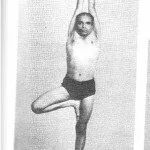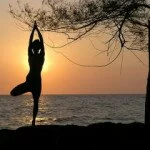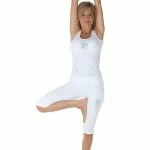Vriksasana (vrik-shah-sə-nə; Sanskrit: वृक्षासन; IAST: vṛkṣāsana) or Tree Pose is an asana.
The name comes from the Sanskrit words vriksa or vriksha (वृक्ष, vṛkṣa) meaning “tree” and asana (आसन) meaning “posture”.
From Tadasana, weight is shifted to one leg, for example, starting with the left leg. The entire sole of the foot remains in contact with the floor. The right knee is bent and the right foot placed on the left inner thigh, or in half lotus position. With the toes of the right foot pointing directly down, the left foot, center of the pelvis, shoulders and head are all vertically aligned. Hands are typically held above the head either pointed directly upwards and unclasped, or clasped together in anjali mudra.
The asana is typically held for 20 to 60 seconds to stretch the spine, returning to tadasana while exhaling, then repeating standing on the opposite leg.
Anatomical focus:-
The asana emphasizes alignment of the head, spine and hips.
Benefits:-
- This asana improves:
- balance
- Poise
- posture
- concentration
- increases the range of motion in the hips
- deepens the thorax
- strengthens the ankles
- tones the muscles of the legs, back and chest
Contraindications and cautions:-
Raising the arms above the head for any length of time may involve risks for persons with high blood pressure. The arms can be held at chest height in anjali mudra for those at risk.
Beginner’s tip:-
Faults include leaning to one side, twisting, pushing one hip out; bending or rotating the supporting knee outwards; looking downwards and lacking concentration






